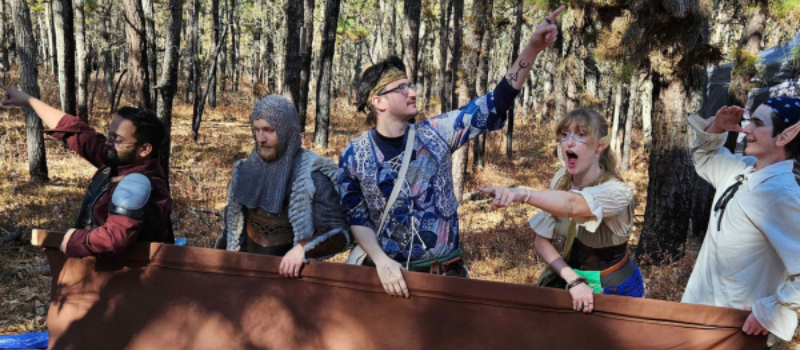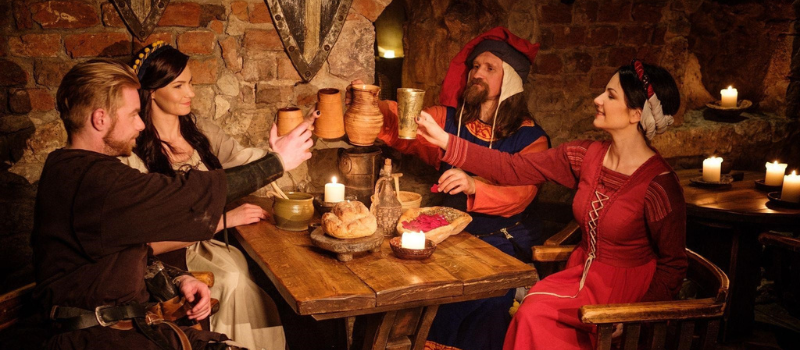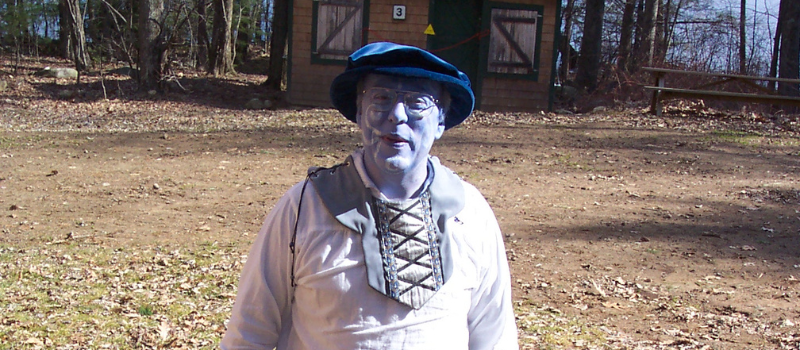How To Start a New LARP Part 2
The 6-Step Process of Starting a LARP - From Idea to Event
.png )
Introduction
I have staffed and worked with many owners and GMs who have started LARPs, but I have never created a LARP myself. So, in order to write this series, we did tons of research and interviewed a dozen owners and game runners who have a variety of game experiences.
In Part 2 of our “How to Start a LARP” series we continue to bring you insights from those experts. Our topic this time is the process of creating a game from idea to event. Through our research, we found that there are 6 key phases or process steps. Whether you are building a one-time theater-style LARP or a long-term complex storyline recurring event LARP, the process is the same; it's the detail and complexity that vary. We focus on the overall process in this blog, and in future blogs we will explore individual topics in more detail.
The 6 Key Processes To Start a LARP
- Idea: An idea is a thought or concept in the mind as a result of mental understanding, awareness, or activity. Applied to LARPing, your idea is a concept for a new game. Maybe it starts with a genre or a story you’d like to tell or maybe some event or activity or even a really cool prop that inspires you.
- Proposal: The proposal phase for LARPs happens when you offer your idea to others seeking acceptance, adoption, or approval.
- Plan: A plan is a detailed design and schedule for building your new game.
- Build: This is a mostly creative process for your game and includes many aspects; world, system, story, etc.
- Market: This phase includes advertising to your targeted audience.
- Run: After building and marketing your game, the final phase of “Starting a LARP” is planning and running your event(s).

“So You Have an Idea- What’s Next?” Rachel Morris, former owner of NERO MA.
In the IDEA phase, you are likely to iterate through the steps multiple times. Once you have solidified your concept, pitch it to fellow LARPers and refine your idea based on the feedback you receive.
In your pitch, define your concept, explain it in terms of genre and type of game. Describe the story you want to tell, the LARPer who is your target audience, and the size of the game you plan to run. As stated in Blog 1: The Top 5 Considerations, your storyline is critical.
Here are some common genres, by no means a comprehensive list:
Adventure, Anarch, Battle Games, Camarilla, Changeling, Changing Breeds, Clan-Specific, Combat, Cyberpunk, Dark Fantasy, Decopunk, Deiselpunk, Demon, Dystopian, Fairy Tale, Giovanni, Goth, Gothic, Grimdark, Heroic, High Fantasy, Horror, Hunter, Kuei-Jin, Low Fantasy, Mage, Mystery, Mystical, Mythical, Political, Post Apocalyptic, Re-Enactment, Sabbat, Science Fantasy, Science Fiction, Steampunk, Supernatural, Survival, Technomagic, Urban Fantasy, Utopian, Vampire, Wargames, Wild West, Wraith, Zombies

After You Have Considered and Incorporated Feedback, Develop a Proposal.
In your PROPOSAL, expand your pitch to include more about the type of game you want to run. In this phase you define the style, describe the level of immersion and the community that you want to build.
Our team of experts suggest that this phase is the most important. It is critical to communicate your vision and not to try to be everything for everyone.
Common LARP styles include boffer, theater, vampire, combat and war games.
Depending on the style, LARPs have varying degrees and types of immersion. In your proposal, define the immersion level (H, M, L) that you want players to experience regarding the game. Include descriptions about the physical setting, plot, characters, and the social community. This will help players decide if your game will be a good fit for them.

Recruiting a Staff, Establishing Goals, Defining Your Timeline and Setting a Budget Is All Part of Creating a Plan.
This phase is the creation and execution of your project PLAN. Our panel consistently shared the criticality of this phase, especially picking the right staff and adhering to a budget, so even though we wrote about them already, we repeat key points and we will dedicate 2 future blogs to these topics.
- Recruit for skill set; creative storytellers, rules experts, organized administrators, executive function, and player engagement. “Take care to find the right team dynamics”, Melissa Caruso, game owner and GM for Seven Virtues told us.
- Create goals and objectives and get agreement and adoption from your staff.
- Make a list of activities and content that you need to build, name an owner, and propose an initial timeline. Expect that the timeline will be challenged and that activities will take longer than you think.
- Develop a budget. For most LARP types your largest expenses will be your site/location, weapons, and props, if applicable.

Build, Build, and Build
You will spend the most time in the BUILD phase. Depending on the style of LARP and if your game is part of an existing game system, some of these steps may already be defined.
World: Creating a fictional world is a combination of defining the setting, people, and culture. It’s influenced by your previous choices of genre and style, and you might start with questions like these:
- What does the world look like?
- Who are the people who live here?
- What is the history of your world?
- What are the current/future challenges people will face?
System: There are several existing game systems such as NERO, Alliance, Accelerent, Amtguard, Bellegarth, and One World by Night, but if your game is independent, you will need to build your own system. Your previous decisions, such as immersion levels, may influence the system you build.
Rules: The rules or skills that you build give your game its flavor. They describe how characters will interact with your story. We’ll dig in on this topic more in a blog focusing on the creative side of starting a LARP.
Policies: This refers to administrative decisions that help you manage the game. Some examples include: PC age restriction, method of payment, and event pricing. It is recommended that you have a code of conduct policy and that you publish all policies for your player base.
Story: Expand and prepare your proposed concept and story to use for marketing your game.
Plot: Depending on style, there may be more or less plot writing in your game, but for recurring boffer games heavy on plot and intrigue, you will spend considerable time developing overarching and individual plots at a campaign, season, and event level. In the planning phase, develop your process and discuss with your plot team.

Get the Word Out
The MARKET phase is all about getting the word out about your game. One of the most effective ways to market is to NPC other games and tell people about your plans. Market your game with a website and through social media, and if you plan an epic game with large numbers, you may even run ads. “Take marketing seriously," advised Dan Comstock, owner of DrachenFest-US and Shiretown Shindig.
It’s Event Time!

The final phase is RUN. The work that comes before in phases 1-5 is going to prepare you to run your game. Many owners use a pre-game play-test day so that they can collect feedback from players and make adjustments to the system and rules. Be prepared to make revisions and consider allowing players to rebuild their characters for 2-3 events after creation if they decide the character is not working for them.
The Buy & Build task refers to event-to-event purchases, perishables and event specific props.
Closing
This blog continues our series on Starting a LARP. The series is targeted at players considering running a LARP, but we hope that it is useful for all players, even those that stumble upon it searching for “What is LARP?”
Part 2 summarized the process of Starting a LARP and it highlighted several key steps to support a successful campaign. We featured advice from Rachel Morris, Melissa Caruso and Dan Comstock, a few of our expert panel. As the series unfolds we will share more pointers and advice from our experts.
- Part 1: The Top 5 Considerations When Starting a LARP
- Part 2: The 6-Step Process to Starting a LARP – From Idea to Event
- Part 3: Staffing Your LARP – How To Build a Core Team
- Part 4: The Creative Side of LARP – What Story Do You Want To Tell
- Part 5: The Business Side of LARP – Pointers From the Experts
- Part 6: The Logistics Side of LARP – A Checklist for Success
Call to Action
Check out Part 1 of our series and reach out if you have advice, stories, or feedback about this article. We’d love to hear from you. Please reach out to us at blog@larportal.com.
If you are a game owner or thinking about starting a game, let LARP Portal simplify your administrative processes and give you and your players more time for LARPing. Contact us at demo@larportal.com today for a free demo.
Latest Blogs


.png )




.png )

















